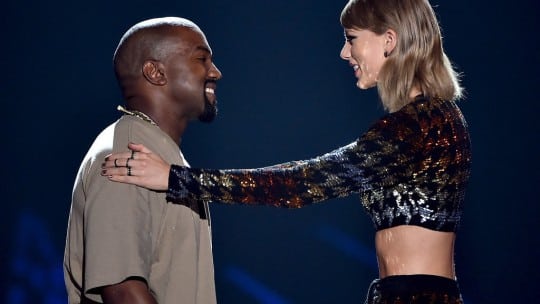
Pity PR pros trying to get out their brands’ messages socially in the aftermath of the Grammy Awards. For many it was the first morning back in the office after the Grammys and all anyone could talk about, tweet about or Instagram about was Kanye West and Taylor Swift. It’s not that the world stood still over the weekend: The longest-sitting Supreme Court justice passed away suddenly on Saturday evening, earlier in the week Russia bombed Syrian hospitals, the refugee crisis in Europe was ongoing and global markets were reeling. Still, it was all Kanye and Taylor all the time. It made us think: Who’s the real competition for PR pros, brands in their space or Kanye and Taylor, who’ve become brands themselves? We asked a slew of PR practitioners—nearly all of whom will be presenters at PR News ’ Social Media Summit later this week in Huntington Beach, CA—how brands can use social media to penetrate the cultural morass.
To Tweet or Not to Tweet? The first question to ask is whether or not you want to piggyback on the hot trend or news of the day. For Rachel Mátos, director of social media and influencer relations at Latina Bloggers Connect, the verdict is clear. “Pop culture drama on Twitter comes and goes—quickly. You can simply ignore it. Or you can go the @PizzaHutUK route and get your name in the headlines. It all depends on what you want your brand to be remembered for,” she says.
For FleishmanHillard SVP Brandi Friel, “Not every moment is right for every message. If your audiences are focused on trending topics that are unrelated to your brand narrative or communications objectives, let them be. When the chatter dies down, your message will have a much better chance of connecting with your audiences.”
Britt Klontz of Distilled cautions, “It’s a bit of a slippery slope for a brand to take advantage of a celebrity feud.” Yet “tapping into a topic that is trending among your target audience could present a wealth of opportunity for your brand to break through the clutter. The key is to know your limits and ask: Does it make sense for the brand to join in the discussion? Does the issue you’re playing with align with your brand’s value and core messaging? If so, question what could be the potential outcome, both positive and negative, by doing so.”
Engage But Strategize
Friel agrees with Klontz. “When all eyes are on a particular topic or trend, strategize how your brand can authentically connect to that subject. Craft relevant, real-time, shareable content that can be intelligently connected to the hashtag, trend or topic,” she says.
And be creative, urges Melissa Keklak, CEO of MMKpr. “Many brands have begun to master staying on message while making themselves relatable to the social chatter taking place among consumers,” she says, noting “one of the most memorable was Oreo’s infamous Super Bowl 2013 tweet “You can still dunk in the dark.”” Avoid engaging for the sake of it, however. “Don’t just jump on the bandwagon—strategically place yourself on the bandwagon with authentic messages and compelling creative,” Friel adds.
“But,” Klontz says, “if it truly makes sense for your brand to tap into its inner Tay Swift or Yeezus, then a perfectly timed and well-written tweet or Facebook post could be a great way to latch onto a trending topic to get your brand noticed.”
Timing is critical, adds Friel. “News, information and branded content that is current and timely is much more appealing to your audiences,” Friel says. “Know when your brand’s significant moments-in-time are and focus your efforts and communications around those times.”
Keeping Up: While PR pros always are told to stay up on current events and trends, social media has made that advice even more important. “Be aware of what’s going on in the world around you before publishing,” says Lisa Adams, PR and digital communications manager at FMC Technologies. Adds Cynthia Johnson, director of brand development at American Addiction Centers, “Make sure that you are aware of trending news so that you don’t make announcements or statements that could be insensitive to a situation.” Klontz advocates caution when using controversial issues to exploit your brand, “even for the sake of humor.”
Be Specific: The discussion comes full circle when several of our PR pros counsel to avoid going for huge numbers alone. Adams urges that you “micro target your messages to those you’re trying to reach rather than broadcast to the general public.” Johnson adds “Take the time to know who you are trying to reach and what it will take to get them to notice your message. Most of the time you won’t need everyone to read your story, so stop using ambiguous messaging and start focusing in on your audience with specifics.”
As Keklak says, “Many brands are great at liking, sharing, retweeting but it takes personalized engagement to captivate followers’ attention and brand loyalty. Talk with your followers not to them. Make them feel like they are part of your brand and the conversation.”
CONTACT: @theArtMuse [email protected] @Britt_Klontz [email protected] [email protected] [email protected]
Join us Feb 25, 26 in Huntington Beach, CA, for PR News’ Social Media Summit, http://www.socialmediaconf.com/
